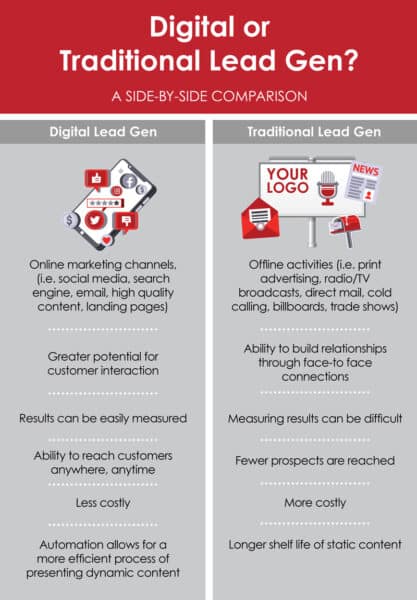Unlocking the mysteries of lead generation that lead to sales
 Generating leads is the lifeblood of any business. It’s the way to make sales. And, without sales, there’s no revenue and without that, there is no business. So, lead generation is kind of a big deal.
Generating leads is the lifeblood of any business. It’s the way to make sales. And, without sales, there’s no revenue and without that, there is no business. So, lead generation is kind of a big deal.
According to 85 percent of B2B companies, lead generation is the most important marketing goal.
But, knowing what method will work can be confusing. Where do you start? How do you reach the right prospects that will buy your product or service?
The answers to these questions begin with a better understanding of what lead generation is all about.
What is lead generation?
 Lead generation is the process of attracting prospects to your business and increasing their interest through nurturing, all with the end goal of converting them into a customer. The key to keep in mind is that generating leads is a process that takes place over time; not an event in which sales occur overnight.
Lead generation is the process of attracting prospects to your business and increasing their interest through nurturing, all with the end goal of converting them into a customer. The key to keep in mind is that generating leads is a process that takes place over time; not an event in which sales occur overnight.
Say, for example, a company is looking for ways to improve its marketing presence, but doesn’t have the expertise or personnel to know where to begin. A company manager searches online and Viola!, she discovers Marketing Direction and is attracted by some of the content related to hiring a “Fractional Marketing Professional”. Marketing Direction then proceeds to nurture the company manager/lead with a series of emails, video calls and presentations and that lead is ultimately converted into a new client.
“The goal is to establish a connection with prospects early in their buying process,” states Mark Holland, VP, Agency Operations and Marketing at Marketing Direction. “As you start to earn their trust, you continue to build on that relationship until they’re ready to make a purchase from you.”
Why is Lead Generation So Important?
When executed correctly, the lead generation process can build visibility, credibility, trust and interest with people most likely to purchase your particular product or service. Those same high-quality prospects can become high-value customers resulting in more revenue for your company. Without leads, it is hard to maximize growth.
One of the most important elements to growing your business is creating greater brand awareness. Lead Generation educates and informs people in your defined market regarding your product/service and its features, thus creating a scope for ‘word of mouth’. As a result, when customers are ready to make a purchase in the area you are offering, they will automatically think of your company first.
“Besides building awareness,” explains Mark, “lead generation helps foster loyalty to your brand, resulting in repeat customers.”
Perhaps the most important benefit to focusing on lead generation is to increase sales of your product or service. There’s a reason why more than 55 percent of B2B marketers spend more than half of their marketing budget on lead generation. Businesses that utilize lead generation programs are more likely to make more sales by converting leads into buying customers.
The art and science of lead generation
How you generate leads varies from industry to industry based on who your audience is and how they absorb information. For example, how a real estate company reaches customers will differ from the approach taken by an engineering firm. There are traditional activities as well as digital formats and there are pros and cons to both.
 Typical traditional methods include cold calling, direct mail, networking and print advertising. Many salespeople prefer the traditional approach of a ‘face-to-face’ connection as it presents an opportunity to meet firsthand with a prospect and immediately answer any questions they may have. A prospect may not make an immediate purchase, but he or she will appreciate the time you spent explaining the details of your product.
Typical traditional methods include cold calling, direct mail, networking and print advertising. Many salespeople prefer the traditional approach of a ‘face-to-face’ connection as it presents an opportunity to meet firsthand with a prospect and immediately answer any questions they may have. A prospect may not make an immediate purchase, but he or she will appreciate the time you spent explaining the details of your product.
However, face-to-face meetings—such as trade shows—can be expensive when you factor in travel and hotel costs, meals and conference fees. And, the number of prospects seen is somewhat limited. For these reasons, a case can be made in favor of digital lead generation.
Digital lead generation strategies include email marketing, content marketing, social media, Pay-Per-Click (PPC) Advertising and Search Engine Optimization (SEO). The beauty of these platforms is that, compared to traditional methods, they are much less expensive and can be targeted at a very granular level. There is also the ability to reach prospects anywhere, anytime.
Automation is another advantage presented when going digital. Content can be scheduled in advance, making the whole process streamlined and more time efficient.
However, there is the risk that your email will end up in your contact’s spam folder. Furthermore, most people are immediately turned off by ‘self-promoting’ content. Relying solely on digital formats may make your business appear out of touch and uninterested in the needs of what your prospects need.
“Knowing which approach is right for your business depends a lot on your niche and customer demographic,” explains Holland. “Sometimes a blend of both techniques is the answer.”
If you’re unsure whether to go digital, traditional or even where to begin with a lead generation program, contact Marketing Direction. Trust our seasoned experts to determine the best strategy for generating leads for your business.
There’s a lot more to generating qualified leads than just sending out an occasional email. Be sure to stay tuned for the next chapter in our series: Lead Generation Mission Possible 2 – The Full Lead Generation Ecosystem.


